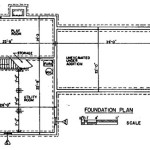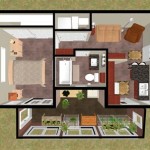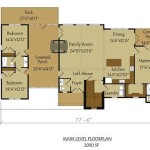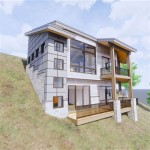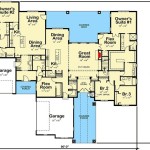Georgian Style House Plans refer to architectural blueprints that outline the design and construction of houses adhering to the Georgian architectural style. This style, popularized in England during the 18th century, is characterized by its symmetrical facade, rectangular shape, and elegant ornamentation.
Georgian houses are known for their timeless beauty and classic proportions. They typically feature a central front door flanked by two windows on each side, a balanced and orderly arrangement that exudes grandeur and sophistication. The second floor often has a row of five windows, corresponding to the number of rooms within the house. The roof is typically pitched and may have dormers or chimneys.
In this article, we will explore the key features of Georgian Style House Plans, discuss their history, and provide tips for incorporating this architectural style into your dream home.
When designing a Georgian style house, consider these key points:
- Symmetrical facade
- Rectangular shape
- Central front door
- Two windows on each side of door
- Second floor with five windows
- Pitched roof
- Dormers or chimneys
- Classical ornamentation
- Grand scale
Incorporating these elements will help you create a home that embodies the timeless elegance of Georgian architecture.
Symmetrical facade
One of the defining characteristics of Georgian style house plans is their symmetrical facade. This means that the front of the house is divided into two equal halves, with a central axis of symmetry. The front door is typically located in the center of the facade, with windows arranged evenly on either side. This creates a sense of balance and order, and gives the house a grand and stately appearance.
The symmetrical facade of a Georgian house is often achieved through the use of pilasters, or engaged columns, which divide the facade into vertical bays. The pilasters may be topped with decorative capitals, and the bays may be further articulated with pediments or other classical ornamentation.
The symmetrical facade of a Georgian house is not only aesthetically pleasing, but also has a practical purpose. It helps to distribute the weight of the house evenly, and it provides a sense of stability and solidity. Additionally, the symmetrical arrangement of windows allows for even distribution of natural light throughout the house.
If you are considering building a Georgian style house, it is important to work with an architect who understands the principles of Georgian architecture and can help you create a home that is both beautiful and functional.
Rectangular shape
Another key characteristic of Georgian style house plans is their rectangular shape. This means that the house is essentially a box, with four straight sides and four right angles. The rectangular shape is often emphasized by the use of pilasters or engaged columns, which divide the facade into vertical bays. The bays may be further articulated with pediments or other classical ornamentation.
The rectangular shape of a Georgian house is not only aesthetically pleasing, but also has a practical purpose. It allows for efficient use of space, and it makes it easy to add on to the house in the future. Additionally, the rectangular shape helps to distribute the weight of the house evenly, and it provides a sense of stability and solidity.
Georgian houses are typically two or three stories tall, with a symmetrical facade and a hipped roof. The hipped roof is a type of roof that slopes down on all four sides, and it is often used on Georgian houses because it provides good protection from the elements.
If you are considering building a Georgian style house, it is important to work with an architect who understands the principles of Georgian architecture and can help you create a home that is both beautiful and functional.
Central front door
The central front door is one of the most important features of a Georgian style house plan. It is typically located in the center of the facade, and it is often flanked by two windows on each side. The door is typically made of wood, and it may be painted or stained. It is often topped with a transom window, which allows light to enter the foyer.
The central front door of a Georgian house is more than just a functional entrance to the home. It is also a statement of style and elegance. The door is often surrounded by elaborate moldings and carvings, and it may be topped with a pediment or other classical ornamentation. The door hardware is typically made of brass or iron, and it is often quite ornate.
When choosing a central front door for your Georgian style house, there are a few things to keep in mind. First, consider the size of the door. The door should be large enough to allow for easy access, but it should not be so large that it overpowers the facade of the house.
Second, consider the style of the door. The door should be in keeping with the overall style of the house. If the house is a more formal Georgian style, then the door should be more ornate. If the house is a more informal Georgian style, then the door can be more simple.
Two windows on each side of door
Georgian style house plans typically feature two windows on each side of the central front door. These windows are typically double-hung windows, meaning that they have two sashes that slide up and down. The windows may be topped with pediments or other classical ornamentation.
The windows on each side of the door help to create a sense of balance and symmetry on the facade of the house. They also allow for natural light to enter the foyer and other rooms on the first floor. The windows may be placed close to the door, or they may be set back slightly to create a more formal appearance.
The size and style of the windows on each side of the door should be in keeping with the overall style of the house. If the house is a more formal Georgian style, then the windows should be more ornate. If the house is a more informal Georgian style, then the windows can be more simple.
When choosing windows for your Georgian style house, there are a few things to keep in mind. First, consider the size of the windows. The windows should be large enough to allow for natural light to enter the home, but they should not be so large that they overpower the facade of the house.
Second, consider the style of the windows. The windows should be in keeping with the overall style of the house. If the house is a more formal Georgian style, then the windows should be more ornate. If the house is a more informal Georgian style, then the windows can be more simple.
Second floor with five windows
Many Georgian style house plans feature a second floor with five windows. This is a classic Georgian design element that adds symmetry and balance to the facade of the house. The five windows are typically arranged in a row, with two windows on each side of a central window.
- Symmetry and balance
The five windows on the second floor help to create a sense of symmetry and balance on the facade of the house. This is a key characteristic of Georgian architecture, which emphasizes order and proportion.
- Natural light
The five windows on the second floor allow for natural light to enter the rooms on the second floor. This can help to create a bright and airy atmosphere in the home.
- Ventilation
The five windows on the second floor can be opened to provide ventilation for the rooms on the second floor. This can help to keep the home cool and comfortable during the summer months.
- Aesthetics
The five windows on the second floor are a classic Georgian design element that adds beauty and character to the facade of the house.
When choosing windows for the second floor of your Georgian style house, there are a few things to keep in mind. First, consider the size of the windows. The windows should be large enough to allow for natural light to enter the home, but they should not be so large that they overpower the facade of the house.
Second, consider the style of the windows. The windows should be in keeping with the overall style of the house. If the house is a more formal Georgian style, then the windows should be more ornate. If the house is a more informal Georgian style, then the windows can be more simple.
Pitched roof
A pitched roof is a type of roof that slopes down on all four sides. This type of roof is common on Georgian style houses, and it helps to give the house a distinctive and elegant appearance.
- Drainage
One of the main advantages of a pitched roof is that it helps to drain water away from the house. This is important because it helps to prevent water damage to the roof and the walls of the house. The slope of the roof also helps to prevent snow and ice from building up on the roof, which can put stress on the roof and cause it to collapse.
- Ventilation
A pitched roof also helps to ventilate the attic of the house. This is important because it helps to prevent the attic from becoming too hot and humid. The ventilation helps to circulate air in the attic, which helps to keep the house cool and comfortable in the summer months.
- Aesthetics
A pitched roof is a classic Georgian design element that adds beauty and character to the facade of the house. The slope of the roof and the way it is framed can create a variety of different looks, from a simple and understated look to a more elaborate and ornate look.
- Durability
A pitched roof is a durable and long-lasting type of roof. It is able to withstand high winds and heavy snow loads. This makes it a good choice for houses in areas that experience severe weather conditions.
When choosing a pitched roof for your Georgian style house, there are a few things to keep in mind. First, consider the pitch of the roof. The pitch of the roof is the angle at which the roof slopes down. A steeper pitch will help to shed water and snow more effectively, but it will also put more stress on the roof structure. A shallower pitch will be less stressful on the roof structure, but it may not shed water and snow as effectively.
Second, consider the type of roofing material you want to use. There are a variety of different roofing materials available, each with its own advantages and disadvantages. Some of the most popular roofing materials for Georgian style houses include slate, tile, and metal.
Dormers or chimneys
Georgian style house plans often incorporate dormers or chimneys as functional and decorative elements.
- Dormers
Dormers are vertical extensions of the roof that create additional space on the upper floors of a house. They are typically found on the front or back of the house, and they may be topped with a pediment or other classical ornamentation. Dormers allow for more natural light to enter the upper floors of the house, and they can also provide additional ventilation. Additionally, dormers can add visual interest to the facade of the house.
- Chimneys
Chimneys are vertical structures that vent smoke and gases from fireplaces and stoves. They are typically located on the roof of the house, and they may be made of brick, stone, or metal. Chimneys not only serve a functional purpose, but they can also add visual interest to the facade of the house. Additionally, chimneys can be used to support antennas and other rooftop equipment.
When choosing dormers or chimneys for your Georgian style house, there are a few things to keep in mind. First, consider the style of the house. The dormers or chimneys should be in keeping with the overall style of the house. If the house is a more formal Georgian style, then the dormers or chimneys should be more ornate. If the house is a more informal Georgian style, then the dormers or chimneys can be more simple.
Second, consider the size of the dormers or chimneys. The dormers or chimneys should be large enough to serve their intended purpose, but they should not be so large that they overpower the facade of the house.
Classical ornamentation
Classical ornamentation is a key feature of Georgian style house plans. This ornamentation is inspired by the architecture of ancient Greece and Rome, and it is often used to add a sense of elegance and sophistication to a home.
There are many different types of classical ornamentation that can be used on a Georgian style house, including:
- Pediments
Pediments are triangular gables that are often used to crown windows, doors, and other openings. Pediments can be plain or they can be decorated with carvings or other ornamentation.
- Columns
Columns are vertical supports that are often used to frame windows, doors, and other openings. Columns can be made of wood, stone, or metal, and they can be either fluted or plain.
- Pilasters
Pilasters are flat columns that are attached to a wall. Pilasters can be used to add a sense of depth and interest to a wall, and they can also be used to frame windows, doors, and other openings.
- Moldings
Moldings are decorative strips of wood or plaster that are used to add detail and interest to a wall or ceiling. Moldings can be simple or they can be very elaborate, and they can be used to create a variety of different looks.
When choosing classical ornamentation for your Georgian style house, it is important to consider the overall style of the house. If the house is a more formal Georgian style, then the ornamentation should be more ornate. If the house is a more informal Georgian style, then the ornamentation can be more simple.
It is also important to consider the scale of the ornamentation. The ornamentation should be in proportion to the size of the house. If the ornamentation is too large, it will overpower the house. If the ornamentation is too small, it will not be noticeable.
Grand scale
Georgian style house plans are known for their grand scale. This means that they are typically large and imposing, with a sense of spaciousness and grandeur.
- Height
Georgian style houses are typically two or three stories tall. The first floor is typically the tallest, with the second and third floors being slightly smaller. This creates a sense of verticality and grandeur.
- Width
Georgian style houses are also typically wide, with a rectangular or square footprint. This creates a sense of horizontality and spaciousness. The wide facade of a Georgian style house is often divided into bays by pilasters or engaged columns.
- Depth
Georgian style houses are also typically deep, with a long floor plan. This creates a sense of depth and perspective. The depth of a Georgian style house is often emphasized by the use of a central hallway or corridor.
- Volume
The combination of height, width, and depth creates a sense of volume in Georgian style houses. This volume is often accentuated by the use of large windows and high ceilings.
The grand scale of Georgian style houses is not only aesthetically pleasing, but also practical. The large size of these houses allows for spacious rooms and ample storage space. The high ceilings help to create a sense of airiness and light.










Related Posts

